What would net-zero shipping look like?
(Image credit: Oceanbird)
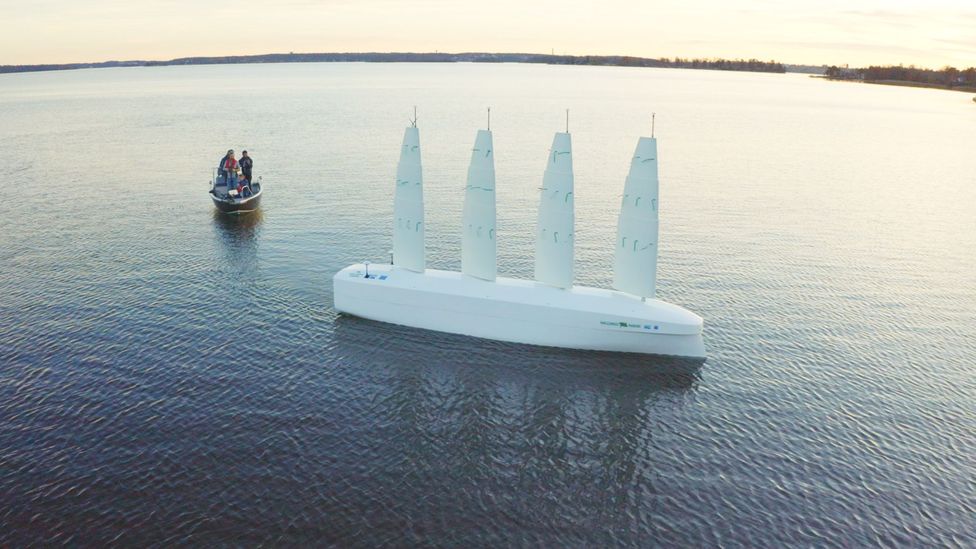
The International Maritime Organization has set a net-zero goal “by or around 2050”. What is needed to reach this?
At a UN summit, countries have agreed to curb shipping emissions to net zero “by or around 2050”.
At the annual meeting of the International Maritime Organization (IMO), countries agreed to cut emissions by 20% by 2030 and 70% by 2040, compared to 2008 levels, and 100% by or around 2050. Small island nations and richer countries had called for a 50% reduction by 2030 and 96% by 2040.
Kitack Lim, Secretary-General of the IMO, described the deal as a “monumental development [that] opens a new chapter towards maritime decarbonisation”. But campaigners warn that the deal is flawed and will fail to bring the shipping industry in line with the Paris Agreement goal of limiting global temperature rise to 1.5C by the end of this century.
Shipping is a highly polluting industry, responsible for nearly 3% of global emissions and generating around 1 billion tonnes of greenhouse gases each year – roughly the same amount as Germany’s carbon footprint. If it were a country, the shipping industry would be the sixth largest polluter in the world.
Reducing maritime emissions rapidly in the next three decades will require new regulations, infrastructure and fuels. But what might green shipping of the future look like?
The world’s largest wind-powered ship
The shipping industry can reduce its reliance on fossil fuels by turning to an ancient technology: sails. Wind propulsion is considered one of the most promising energy sources available for the rapid decarbonisation of shipping. Swedish company Oceanbird has built a prototype ship with four rigid sails. Wind power not only propels the ship forward but also aids its manoeuvrability and agility on the water. One of the biggest challenges is encouraging governments and investors to adopt wind propulsion and retrofit ships, while wind propulsion is still early-stage. (Read more: Will shipping return to its ancient roots?)
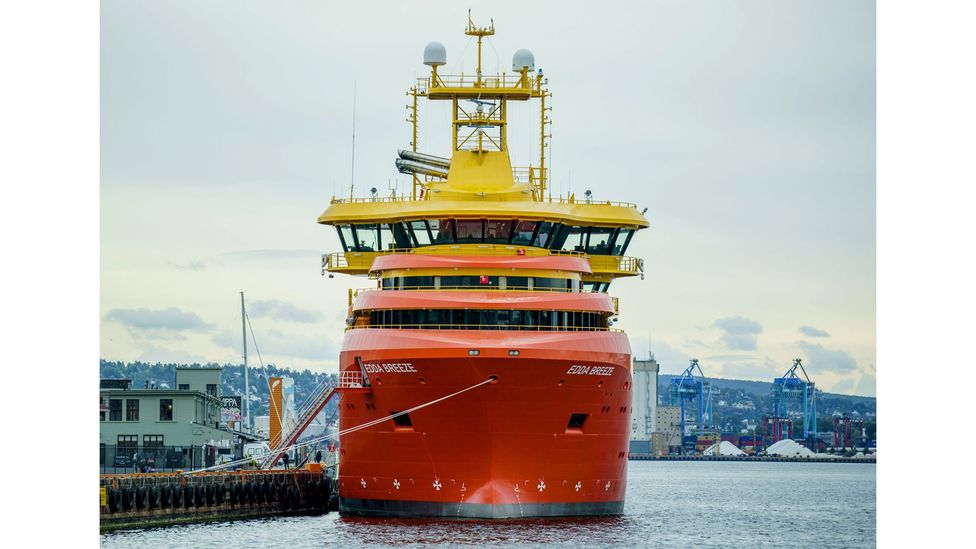
Norwegian ship Edda Breeze has been built to run on a hydrogen-based propulsion system (Credit: Alamy)
Deploying clean fuels such as hydrogen is critical if the shipping industry is to reach net zero by 2050. Green hydrogen – generated by using renewable energy, such as wind or solar power, to extract hydrogen from water molecules – is emissions-free. But there are some major challenges when deploying hydrogen: the fuel must be stored at cryogenic temperatures of -253C (-423F) and crew must be trained how to handle it as the fuel is highly flammable. (Read more about the fuel that could transform shipping).
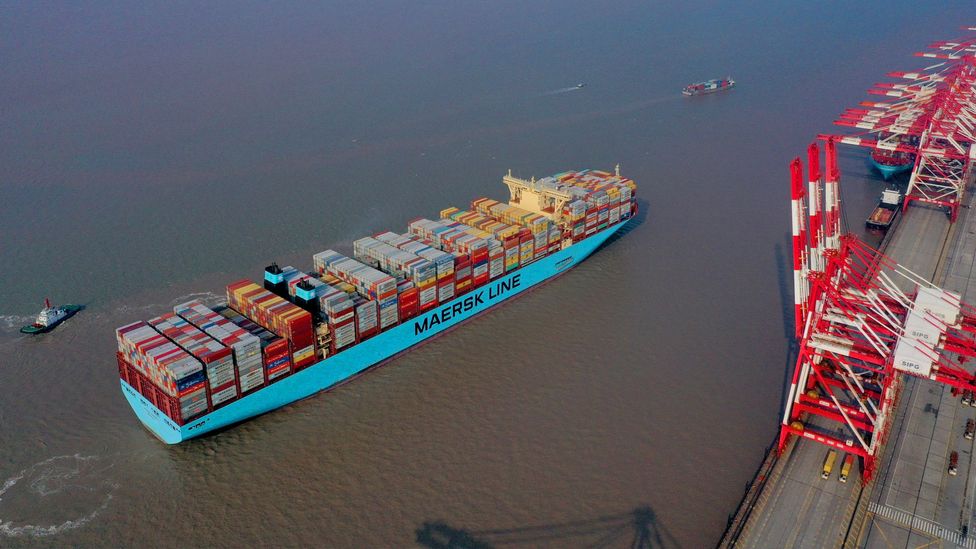
Maersk has ordered a total of 25 methanol-powered ships (Credit: Getty Images)
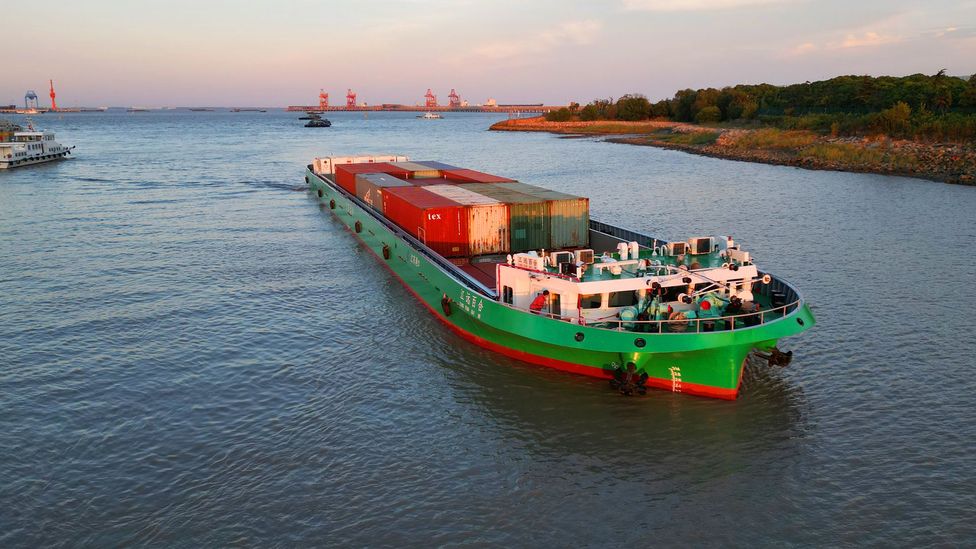
The largest battery-powered river container ship transports goods on the Yangtze River in China (Credit: Getty Images)
Batteries charged using renewable electricity are another way to curb shipping emissions. But there are limits to the distances they can power. Currently, renewable batteries are an option only for smaller ships making short journeys, such as ferries and river boats, not for large cargo ships crossing oceans. Instead, ship owners are looking to power cargo ships with a combination of wind power and solar panels.Japanese renewable energy systems company Eco Marine Power, for example, has developed ” EnergySails”: rigid sails fitted with solar panels, which allow ships to use both solar and wind energy at the same time.
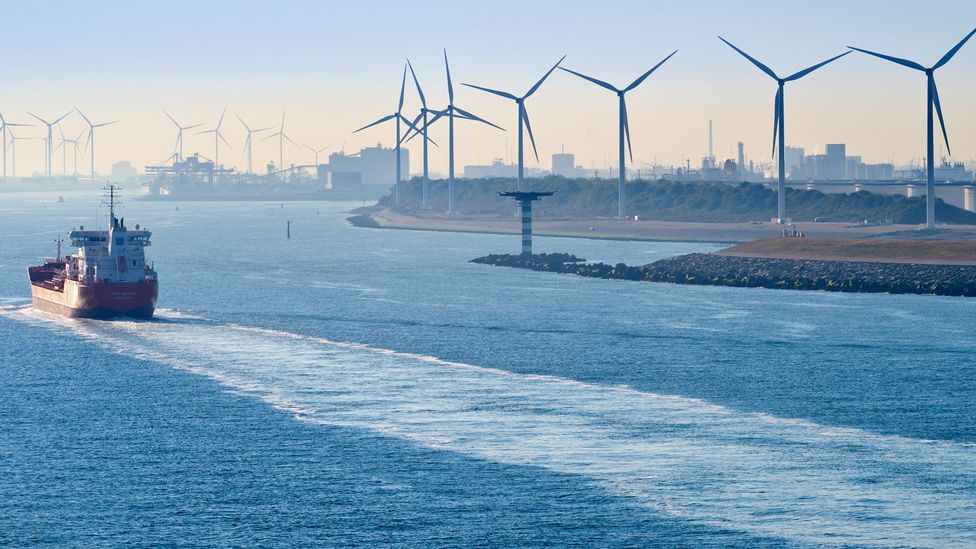
Switching to green fuels in shipping will require investment in renewable energy infrastructure at ports (Credit: Getty Images)
A rapid uptake of green fuels on vessels will require abundant new infrastructure at ports to produce and store them, and to allow ships to refuel. Ports must invest in hydrogen-generating electrolysers, renewable energy capacity, such as wind and solar power, as well as battery and hydrogen storage facilities. Most ships will also need to be retrofitted to enable them to run on green fuels, use wind propulsion and digital software to improve their efficiency and optimise routes.
;
Read More: What would net-zero shipping look like?

